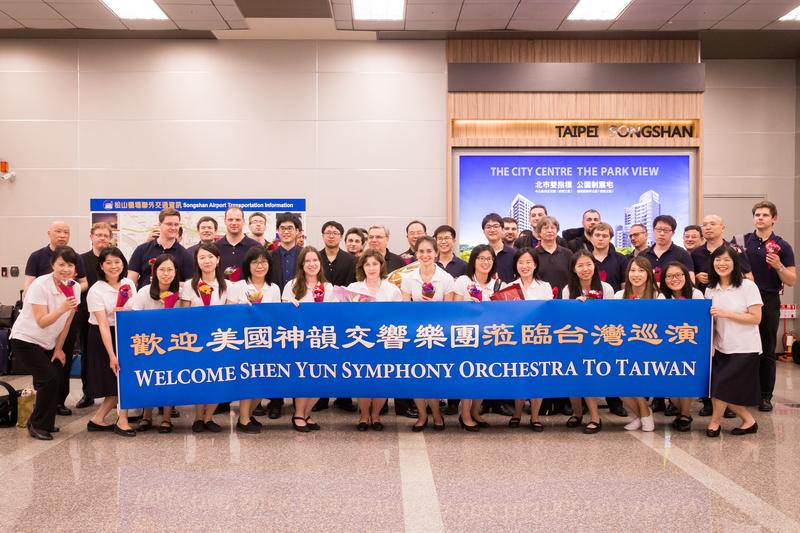TAIPEI, Taiwan—A crowd of more than 100 fans—with flowers, banners, and decorated placards—gathered at Taipei Songshan Airport to welcome Shen Yun Symphony Orchestra on Sept. 19.
Shen Yun Symphony Orchestra, a New York-based orchestra, had just completed its two-city tour in South Korea before arriving in Taipei to kick off the second leg of its 2017 global tour. Many excited fans at the airport had the opportunity to personally hand flower bouquets to members of the orchestra, and some had the chance to take photos with them.






